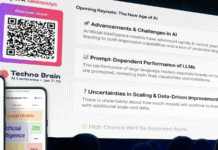
Two major industry players—Marriott International (as part of its Meetings Imagined initiative) and PCMA—assembled a group of experts in fields ranging from data science to the sharing economy to identify key trends influencing meetings in the next 3 to 5 years. Their conclusions might surprise you.
1. Sensory Analytics. Imagine sensors that can take the pulse of the room. Are attendees too hot, losing interest, responding positively to the material? Advancements in data analytics, as well as cheaper and smaller physical sensors, are simplifying the ability to collect data about physical experiences, analyze the inputs and make adjustments in real time. Looking forward, their use will evolve to allow for minute-to-minute adjustments, driving greater impact, engagement and effectiveness.
2. Tribalization. From Meetups to CrossFit to hack-a-thons, people are moving away from individualism and towards “tribal” communities of likeminded, passionate individuals who can push each other to a higher level. Moving forward, meetings will foster those smaller group connections and the value of a meeting will become less about the content and speakers and more about the attendee list.
3. Content Safaris. Just as consumers expect content to be curated and in their control, meetings will need to provide multiple options from which attendees can forge their own paths. Meeting planners will need to restructure content or manipulate a room’s physical set-up at a moment’s notice to be more dynamic and adapt to real-time participant feedback.
What’s Trending?
>> Discover: Wine & Volcano Excursions on Hawaii’s Big Island
>> New York Transforms Phone Booths Into Free WiFi Spots
>> 6 Tips for Planning Global Meetings
>> 3 Hotel Brands to Watch
4. 360° Wellness. There is a radical shift in the definition of wellness to now include physical, emotional, spiritual and social dimensions that are unique to each person. Rather than forcing people to “cheat” on their routines, meetings will need to adjust to attendees’ existing healthy behaviors, and hotels will be expected to customize everything from lighting to airflow to create healthier environments.
5. Immersive Telepresence. As advancements in technology continue to increase immersive telepresence’s capabilities, the meetings industry will find ways to work with new formats that seamlessly convey content and ideas with similar, if not stronger, storytelling than in-person gatherings. As the definition of attendee, speaker, and location broadens to include those participating remotely, planners will need to craft coordinated and cohesive experiences that appeal to both in-person and virtual participants.










